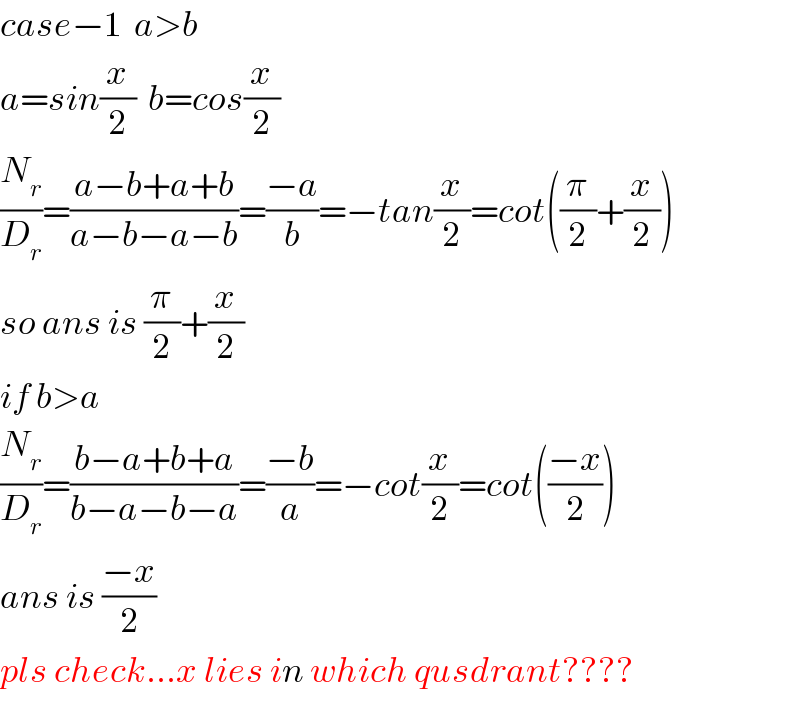
Question and Answers Forum
Question Number 51367 by rahul 19 last updated on 26/Dec/18
![Evaluate: cot^(−1) [(((√(1−sinx))+(√(1+sinx)))/((√(1−sinx))−(√(1+sinx))))] = ?](Q51367.png)
Answered by tanmay.chaudhury50@gmail.com last updated on 26/Dec/18

Commented by peter frank last updated on 26/Dec/18

Answered by ajfour last updated on 26/Dec/18
![let cot θ = (((√(1−cos 2y))+(√(1+cos 2y)))/((√(1−cos 2y))−(√(1+cos 2y)))) where x = (π/2)−2y ⇒ y = (π/4)−(x/2) ⇒ cot θ = ((sin y+cos y)/(sin y−cos y)) = ((cos (y−(π/4)))/(sin (y−(π/4)))) or cot θ = cot (y−(π/4)) = cot (−(x/2)) ⇒ or tan θ = tan (−(x/2)) θ = cot^(−1) [(((√(1−sinx))+(√(1+sinx)))/((√(1−sinx))−(√(1+sinx))))] = n𝛑−(x/2) .](Q51376.png)
Answered by peter frank last updated on 26/Dec/18

Commented by peter frank last updated on 26/Dec/18

